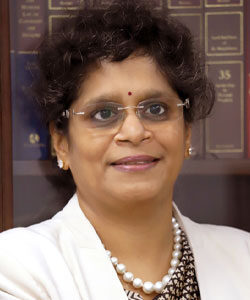In a very short span of time India’s courts have adapted to working during the pandemic, and the lessons learned during this time will be used to increase efficiency and productivity of the judicial system, writes Delhi High Court Justice Prathiba M Singh
In ancient times, adjudication of disputes in India used to take place at the community level, with local heads of communities resolving most disputes on the basis of oral submissions by parties, without the use of pleadings or lawyers. Local heads were replaced with chieftains or kings during the rule of most dynasties.

This system went through a drastic change with the establishment of formal courts during British rule. Magistrates and judges were appointed for adjudicating civil, commercial and criminal cases, and a hierarchy of courts was also set up. The setting up of the formal court system saw with it the growth of lawyers, court complexes, and the introduction of pleadings and paper. The use of paper, handwritten pleadings and handwritten orders by judges was the prevalent system for more than a century.
With the industrial revolution and the introduction of printing technologies and typewriters, the legal world started using typed/cyclo-styled pleadings, and judges used to issue typed orders until the late 1980s. However, the early ‘90s saw the use of computers, which made legal drafting quite easy, and slowly computerization was introduced into the court system.
New technologies
In the past 30 years or so, prior to the declaration of the covid-19 pandemic, computers were used for drafting and printing pleadings, printing orders, and digitization of court records. In the past five years, several steps were taken to introduce digital technologies.
One of the most laudable efforts of the Supreme Court was the creation of the National Judicial Data Grid (www.njdg.gov.in), which is a treasure of information, disseminating the live data of civil and criminal cases including daily orders, status, pendency statistics, etc. The grid is so massive that one can access online orders and proceedings of cases at the lower-most court level in India through the grid.
Salient features of NJDG
- It captures live data of approximately 10 million civil cases and 24 million criminal cases.
- It provides data on the basis of the antiquity of the case, i.e., 0-1 years, 1-3 years, 3-5 years, 5-10 years, 10-20 years, 20-30 years, and above 30 years.
- One can select a state and a district by a drop-down mechanism, and can reach the specific court and the specific case for which information is required. The data are updated by judicial officers across the country at the end of the court’s working day, on a daily basis.
The grid integrates all civil courts, district courts, high courts and the Supreme Court. Thus, data relating to civil and criminal cases are openly and transparently accessible to litigants, law researchers, judges, lawyers and policymakers across the country. Commercial disputes are adjudicated both in civil and criminal courts, depending on the remedy sought by the parties. In civil courts, commercial cases are entertained from the civil judge to the district judge, based on the pecuniary value of the case.
You must be a
subscribersubscribersubscribersubscriber
to read this content, please
subscribesubscribesubscribesubscribe
today.
For group subscribers, please click here to access.
Interested in group subscription? Please contact us.



























